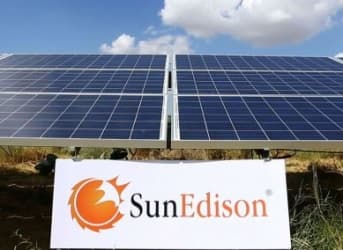SunEdison, one of the giants in solar power globally, may file for bankruptcy protection, as the solar industry gambles on its future, struggling to compete with low oil and gas prices while simultaneously trying to capitalize on what looks like a rosier long-term future.
The company is at the moment negotiating with creditors that gave it a $725-million second-lien loan in January. What is reportedly being negotiated is a debtor-in-possession deal, which is effectively bankruptcy protection, which would mean relinquishing control of its assets to creditors.
What necessitated the negotiations is SunEdison’s failure to provide lenders with its financial statement for the last quarter of 2015, which was a condition set out in the loan agreement. If it does not release its fourth-quarter report by the end of this month, it will be in technical default on more than one loan, an analyst told Bloomberg, and will face charges of some $1.4 billion. Related: Bright News In Dark Times For The Coal Sector
This is the second time SunEdison has delayed the release of its Q4 results. The first time, at the end of February, a couple of former executives at the company questioned the accuracy of the financial data, so SunEdison brought in independent auditors to review the data. The audit is still ongoing, which is the explanation for this second delay announced last week.
Investors and creditors, however, are getting restless, and with a good reason. According to SunEdison’s latest financial report, for the third quarter of 2015, the company had a debt pile of $11.67 billion, while cash and cash equivalents were just $2.39 billion.
How did it come to this for one of the oldest players in the solar industry?
It seems the number-one reason for the current state of affairs was SunEdison’s growth strategy, which focused on acquisitions. It made the same mistake that the top players in another industry—3D Systems and Stratasys¬—made: too many acquisitions in too little time, and returns failing to live up to expectations.
What’s more, it was so cash-strapped it couldn’t complete its latest acquisition after creditors refused to fund the deal. Now the target company, Vivint Solar, is suing SunEdison for the failed acquisition. Related: Record Loss For Petrobras As Political And Economic Crisis Worsen
But unfavorable market trends have also played a role here.
How is the solar industry really doing? It depends who you ask.
Greentech Media (GTM) research forecasts the U.S. solar market to surpass 100 cumulative gigawatts by 2021, led by the utility-scale segment.
The CEO of the Solar Energy Industries Association (SEIA), Rhone Resch, calls this the “new energy paradigm,” and maintains that solar “officially has a seat at the table with the latest energy producers.” In part, this optimistic opinion is made possible through the extension of the federal investment tax credit (ITC), which was set to expire in December but was then extended.
This sets the stage for an alternate view.
Consider the opinion of Breitbart, which suggests that if you still own solar shares, “you’ve been in the sun too long” because the “sector is tanking”, dependent as it is on government subsidies. Related: Brussel’s Terror Attack Drives Europe Further Into Terrorism Rabbit Hole
Renewables and hydrocarbons generally enjoy an inverse relationship: When oil and gas prices are high, solar becomes more attractive; when oil and gas is low, expensive solar wanes. As such, the oil price slump hits solar hard. Indeed, SunEdison reported a net loss of $284 million for its third quarter. Key rivals such as Sunrun and SolarCity also reported losses for 2015.
ADVERTISEMENT
The near-term prospects for the industry are not particularly rosy, but the general outlook for the medium and long term is optimistic.
Failing to spot early a change in the market winds has taken many companies under. Yet, according to some observers, it was SunEdison’s growth strategy—too much, too fast¬—that was the culprit. It couldn’t handle the internal combustion.
By James Burgess of Oilprice.com
More Top Reads From Oilprice.com:
- Oil Prices Fall Fast On Huge Inventory Build
- $40 Billion LNG Project In Australia Cancelled Amid Low Prices
- Is This The Most Intricate Oil Theft Operation Yet?


















